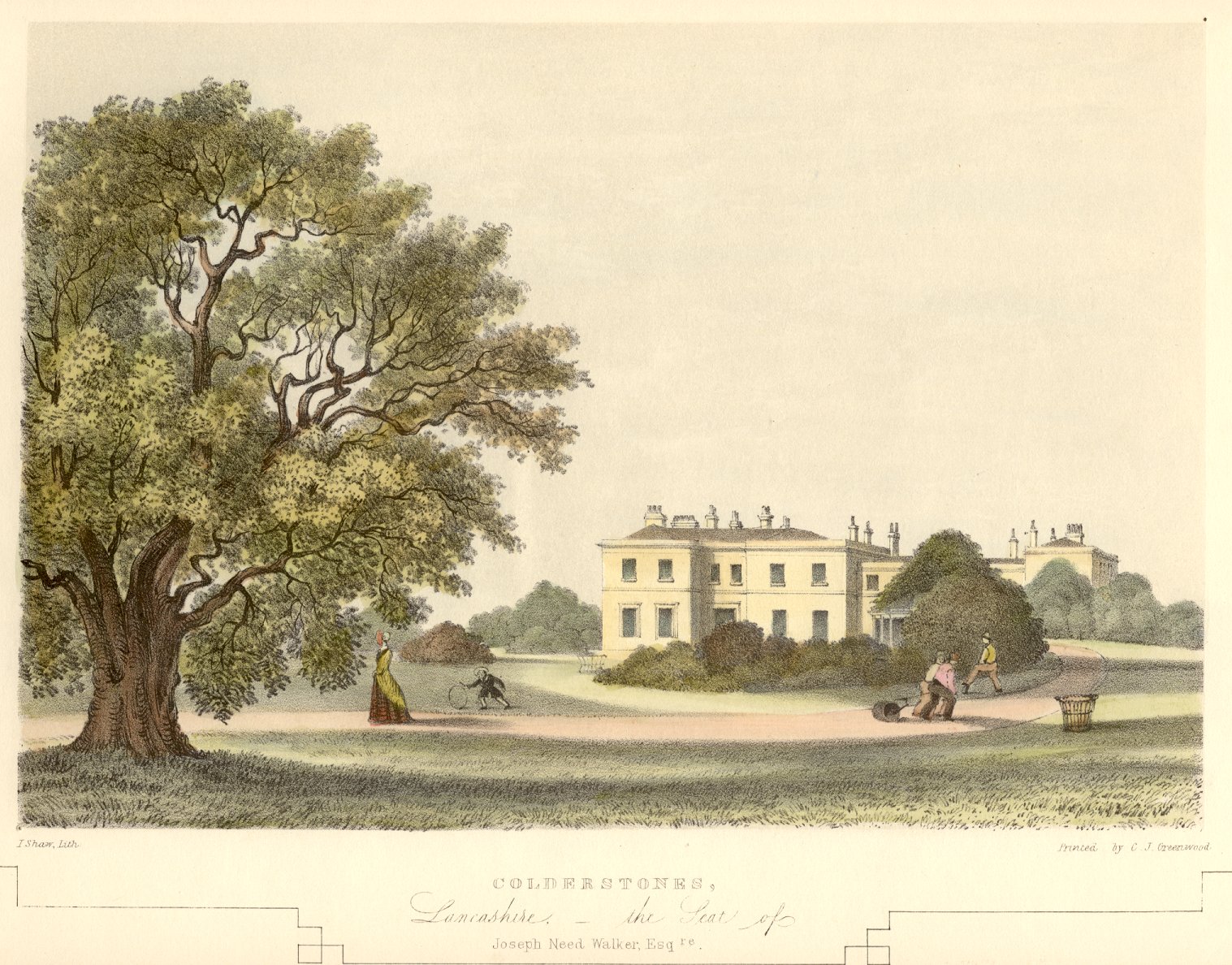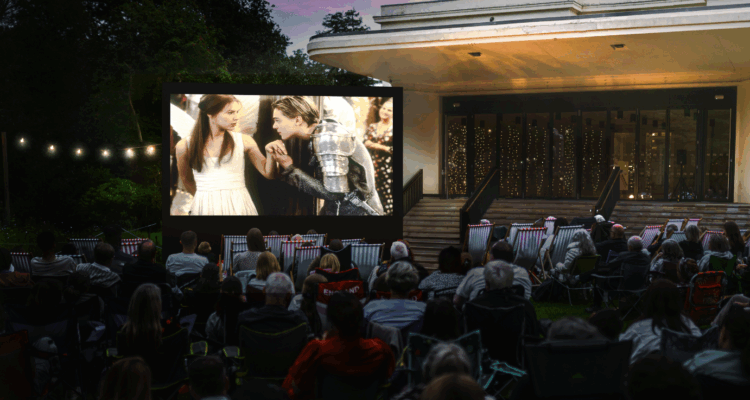Christmas at Calderstones: Through the Ages
Christmas is a special time at Calderstones, and has been over centuries. Though we’re not able to throw open the doors of the Mansion House as we usually would this Christmas, we hope that this insight into how the festive period has been celebrated at Calderstones throughout the ages will stoke some seasonal cheer.
We’re going to look at three different periods in time particularly, and how the Park and the Mansion House played their parts in each of these festive celebrations.
The Neolithic Midwinter and Celebrating the Winter Solstice
The Neolithic is part of the period of time we call the stone age, and it’s the bit right at the end of the stone age. Sometimes it’s called the late stone age, and it was an important point in history with a lot of changes happening in how people lived. The biggest change was from a hunter gatherer lifestyle – one where people moved around constantly to find the best food – to one which was more based upon farming, as people learnt more about planting and keeping animals for food. This shift in lifestyle meant that people could put down roots and stay in one place, building structures to signify a homestead.
One group of people decided to settle near the area we now call Liverpool, and the Calder Stones formed a part of one structure built between 4000 and 5000 years ago.
We don’t know for certain, but there were perhaps rituals or celebrations that happened at the Calder Stones in the Neolithic period, by the fact that there were found to be “…a large quantity of burnt bones, white and in small pieces” when the original structure of the Calder Stones was destroyed in 1833. The Calder Stones themselves were removed, and of course are now displayed in their own courtyard at the Mansion House.
We can look to another Neolithic monument to help us start to know why the solstice, and in particular the winter solstice, was so important to the Neolithic Liverpudlians. The stones at Stonehenge line up with the sunrise on the solstice, and twice a year there is a beautifully aligned sunrise.
Recently archeologists have found evidence of huge feasts happening near Stonehenge. They found the bones from the animals that were eaten at this feast, and they were able to examine them to see how old the animals were when they were killed to be eaten. What they found was really interesting, because all the animals were around 9 months old. We know, of course, that animals are born in the spring, so this tells us that Neolithic people were having huge feasts at Stonehenge to celebrate the winter solstice.
Why were Neolithic people celebrating at the winter solstice? The answer is in farming, which Neolithic communities were doing for the first time. Reaching the middle of winter was a precarious time – not much is growing and there are no animals being born. Winter might have felt like it was going to last forever to the Neolithic people. The shortest day of the year is important because it is a turning point in the cycle of the seasons. The days are going to start getting longer again, and spring is on the way. People needed this to survive, so it was a real moment for celebration.
It is therefore very likely that the community that built the Calder Stones were also celebrating the winter solstice.
For anyone with a particular interest in the importance of the winter solstice to the community who built the Calder Stones, we are holding a special free and socially-distanced guided walk of Calderstones Park on Monday 21 December – the date of this year’s winter solstice. Book now.
A Victorian Christmas and a Homegrown Christmas Dinner
Next, we go forward in time to when the Mansion House was built, in the Victorian era. Lots of traditions that we associate with how we celebrate Christmas today first became popular during the Victorian period. These include Christmas trees, which were introduced to Britain by Prince Albert, Queen Victoria’s German husband; Christmas cards; and Christmas crackers, which were invented by a sweet manufacturer and originally filled with sugared almonds.
The first owner of the Mansion House was Joseph Need Walker, a lead shot manufacturer, and after his death it was owned by Charles McIver, the co-founder of the Cunard Line shipping company. Both of these owners would have likely enjoyed a Christmas feast. In the Victorian period most of Calderstones Park was the estate for the Mansion House. Some of these grounds were gardens, but much of them were used for food production.

There are some clues in the park that show that part of the grounds were once fields for livestock. Two such indications are a rubbing stone for cattle which still exists in the park, and the ditch at the front of the Mansion House, which is called a haha. They were used in the grounds of big houses to keep the animals away from the gardens and the house itself without spoiling the view, rather like a big fence would. All of this suggests that there were farm animals, and possibly cows, on the estate during the Victorian period, and because beef and goose were the most popular meats for Victorian Christmas dinners – turkey did not become popular until near the end of Queen Victoria’s reign – it’s likely that the owners of the Mansion House would have eaten their own beef on Christmas Day.
There’s a strong chance that they also would have eaten their own vegetables, as well. A map of the estate from the time shows an extensive kitchen garden for growing fruit and vegetables. Today this area is the walled gardens in the park – the sensory garden, the old English garden and the Japanese garden. In the Victorian times there would have been meticulously neat rows of vegetables growing in this spot. They also had glasshouses for growing fruits such as melons, pineapples and grapes. Growing such fruit in Britain was labour intensive, and even building the heated greenhouses to grow them was expensive, so to have them was a massive status symbol.
The Allerton Oak, the Second World War and keeping spirits up
Moving on, we will look at what is the most well known tree in Calderstones Park and the part it played in boosting morale during the Second World War. Legend has it that The Allerton Oak is over 1,000 years old, so it has witnessed a lot of history. It was supposedly the meeting place of the local Hundred Court, which was an administrative area smaller than a county but bigger than a parish, and would have witnessed things like criminal trials, private disputes and military enlistment.
In 1701 a storm felled many local trees, but not the Allerton Oak. When Joseph Need Walker built the Mansion House and turned the surrounding land into his estate, he did not remove the Allerton Oak. The tree also avoided being caught in the widespread damage that happened across Liverpool and Birkenhead after the explosion of a ship on the River Mersey in 1862, and when the Calderstones estate was sold to the Liverpool Corporation in 1902 efforts were made to conserve the Allerton Oak through metal supports which were placed under low hanging branches.
In the Second World War the Allerton Oak survived bombing on the city, and so gained a reputation for being indestructible. You can imagine that during a time of upheaval, like wartime, the continuous, never changing presence of the ancient tree became a symbol of hope.
This is probably what prompted the people of Liverpool to send oak leaves and acorns from the tree to those in the armed forces. Christmas cards containing oak leaves from the Allerton Oak were sent out to staff members from the parks and gardens department at Calderstones who were serving during the war. One such card also contained a poem, which starts: “not all the storms of centuries have bowed the British oak”.
This feels like a particularly good thing to keep in mind, as this year has at times felt a bit like a storm. Once again, the oak is a reassuring presence in our lives, reminding us these things don’t last forever.
We hope you’ve enjoyed this look back at how some of the occupants of Calderstones throughout history celebrated have Christmas.
While Liverpool is in local tier 2 restrictions we’re looking forward to welcoming visitors back to Calderstones with a number of Covid-safe events throughout December – take a look at what’s happening here.
Share
Related Articles

Open Air Cinema and Theatre FAQ’s
If you were able to snap up tickets to our Open Air programme this summer, check below for any queries…

New Liverpool open air cinema brings movies to the Mansion
NEW FOR 2025: Eight handpicked films will hit the big screen in Calderstones Park this summer as national Shared Reading…

A breath of fresh air! This summer’s outdoor and cultural events at our Calderstones Park home
The Reader serves up a giant scoop of summer arts and entertainment from three special summer garden parties with special…


